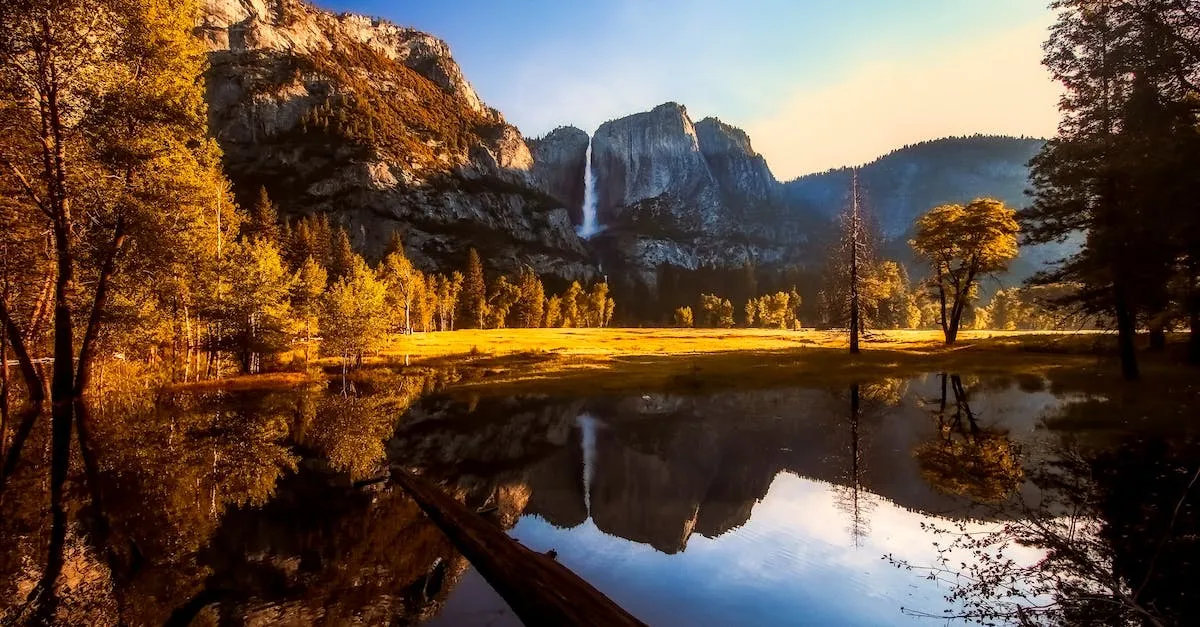Exploring California’S Largest Lake: Facts And Highlights
With over 3,000 miles of scenic shoreline, diverse wildlife, and plenty of recreational activities, the largest lake in California offers an abundance of beauty and adventure. If you’re short on time, here’s a quick answer to your question: The largest lake located entirely in California is the Salton Sea, covering 376 square miles in the deserts of the southeastern part of the state.
In this comprehensive guide, we dive into the unique facts and top highlights of California’s biggest inland body of water. We’ll cover details on the Salton Sea’s location, formation, dimensions, ecosystem, recreational activities, environmental challenges, and more. Whether you’re looking to visit or are just curious to learn about the Salton Sea, this article will provide an informative overview of California’s largest lake.
Where the Salton Sea is Located and How it Formed
Located in the Colorado Desert
The Salton Sea, California’s largest lake, is situated in the southern part of the state, specifically in the Colorado Desert. It is located in Riverside and Imperial counties, near the border with Mexico.
With its vast expanse of shimmering water, the Salton Sea is a captivating sight amidst the otherwise arid desert landscape.
Formed between 1905-1907 from a breached irrigation canal
The Salton Sea has an intriguing origin story. It was formed unintentionally between 1905 and 1907 when an irrigation canal, known as the Alamo Canal, was breached. This canal was designed to divert water from the Colorado River to irrigate the Imperial Valley, an agricultural region in California.
However, the breach caused an overwhelming inflow of water that could not be controlled, leading to the formation of the Salton Sea.
Has no natural outlets, being fed by agricultural runoff
Unlike most lakes, the Salton Sea does not have any natural outlets. Instead, it relies on agricultural runoff from nearby farms as its primary source of water. The region surrounding the Salton Sea is known for its extensive agricultural activities, including the cultivation of various crops such as citrus fruits, vegetables, and cotton.
As a result, the runoff from these farms eventually finds its way into the Salton Sea, replenishing its water levels.
The formation and location of the Salton Sea have made it a unique and ecologically diverse ecosystem. It provides a habitat for numerous bird species, making it a popular destination for birdwatching enthusiasts.
Additionally, its scenic beauty and recreational opportunities attract visitors from all over. To learn more about the Salton Sea and its significance, you can visit https://saltonseaauthority.org/.
Size and Depth of the Salton Sea
The Salton Sea, located in California, is the largest lake in the state. It covers an impressive surface area of 376 square miles, making it a significant body of water. To put this into perspective, it is larger in size than the island of Malta in the Mediterranean Sea.
This vast expanse of water offers plenty of opportunities for recreational activities, including boating, fishing, and birdwatching.
35 miles long by 15 miles wide
The Salton Sea stretches an impressive 35 miles in length and is approximately 15 miles wide. This makes it a substantial body of water that is difficult to miss when exploring the region. Its large size provides ample space for various water-based activities, attracting visitors from near and far.
Average depth of 43 feet, deepest point at 51 feet
The average depth of the Salton Sea is around 43 feet, making it a relatively shallow lake compared to some others. However, it does have its deepest point, reaching 51 feet. Despite its shallow nature, the lake teems with a diverse range of fish species, including tilapia and corvina.
This abundance of aquatic life makes it an excellent spot for anglers to cast their lines.
It’s important to note that these measurements and statistics may vary over time due to natural processes and human intervention. To stay up to date with the current size and depth of the Salton Sea, it’s advisable to refer to reliable sources such as The Salton Sea Authority or California Department of Water Resources.
Unique Ecosystem and Wildlife of the Salton Sea
The Salton Sea, located in Southern California, is a fascinating and unique ecosystem that attracts nature enthusiasts from around the world. It is the largest lake in California and one of the most important bird habitats in North America.
One of the most important bird habitats in North America
The Salton Sea is a critical stopover for migrating birds along the Pacific Flyway. It provides a vital resting and feeding place for hundreds of thousands of birds each year. Its vast shoreline, wetlands, and mudflats offer a diverse range of habitats for various bird species.
According to the Audubon Society, the Salton Sea is home to more than 400 species of resident and migratory birds, making it a birdwatcher’s paradise. From graceful herons and majestic pelicans to colorful shorebirds and rare species, the lake attracts bird enthusiasts of all levels.
Home to 400+ species of resident and migratory birds
The Salton Sea’s unique combination of freshwater and saltwater environments creates a rich food source for birds. The lake’s high salinity levels support a wide variety of fish and invertebrates, which in turn attract numerous bird species.
It is not uncommon to spot flocks of elegant American white pelicans soaring above the lake or groups of western grebes engaging in their famous synchronized courtship dances.
Moreover, the Salton Sea offers nesting grounds for several bird species, including the endangered Yuma clapper rail and the California least tern. These birds rely on the lake’s marshes and shoreline vegetation to build their nests and raise their young.
Also has fish populations like tilapia
In addition to its remarkable bird population, the Salton Sea is home to a variety of fish species, including the hardy and adaptable tilapia. These fish thrive in the lake’s warm, saline waters, and their presence supports the local fishing industry.
Recreational fishing at the Salton Sea attracts anglers looking to catch tilapia, as well as other species like corvina and sargo. The lake’s fish population also serves as a significant food source for the resident and migratory bird species that call the area home.
The Salton Sea’s unique ecosystem and diverse wildlife make it an extraordinary destination for nature lovers and bird enthusiasts. Whether you’re an avid birder or simply appreciate the beauty of the natural world, a visit to the Salton Sea is sure to be a memorable experience.
Top Recreational Activities at the Salton Sea
Fishing for tilapia, corvina, and sargo
One of the most popular recreational activities at the Salton Sea is fishing. Anglers flock to the lake to catch a variety of fish species, including tilapia, corvina, and sargo. These fish provide a thrilling challenge for fishing enthusiasts of all skill levels.
Whether you prefer casting from the shore or fishing from a boat, the Salton Sea offers plenty of opportunities to reel in a big catch.
Boating, kayaking, camping, hiking trails
The Salton Sea is a paradise for outdoor enthusiasts. Boating and kayaking are popular activities that allow visitors to explore the vast expanse of the lake and enjoy the stunning scenery. Camping is also a great way to experience the beauty of the area, with several campgrounds available for overnight stays.
Additionally, the lake is surrounded by hiking trails that offer breathtaking views and opportunities to spot wildlife.
Birdwatching, wildlife photography
The Salton Sea is a haven for birdwatchers and wildlife photographers. The lake attracts over 400 species of birds, making it a prime location for birdwatching. From graceful pelicans to colorful shorebirds, the variety of avian life is truly remarkable.
Wildlife photographers will find endless opportunities to capture stunning images of both birds and other wildlife that call the Salton Sea home.
Hunting during waterfowl season
During waterfowl season, hunters can enjoy the thrill of pursuing ducks and geese at the Salton Sea. The lake provides a unique hunting experience with its diverse waterfowl population. Hunters must adhere to the regulations and guidelines set by the California Department of Fish and Wildlife to ensure the sustainability of the hunting activities and the preservation of the natural habitat.
For more information on recreational activities at the Salton Sea, visit California Department of Fish and Wildlife.
Environmental Challenges Facing the Salton Sea
Declining water inflows leading to receding shorelines
The Salton Sea, California’s largest lake, is currently facing several environmental challenges that require urgent attention. One of the major concerns is the declining water inflows, which has resulted in receding shorelines.
The lake relies heavily on agricultural runoff and wastewater from neighboring communities for its water supply. However, due to the increasing demand for water in the region and ongoing drought conditions, the inflows have significantly decreased in recent years.
This decline in water inflows has led to the exposure of vast stretches of lakebed, affecting the overall ecosystem of the Salton Sea. As the shorelines recede, important habitats for birds, fish, and other wildlife are being lost.
This loss of habitat not only disrupts the natural balance but also impacts the local economy, which relies on tourism and recreational activities.
Increasing salinity threatening fish populations
Another significant environmental challenge facing the Salton Sea is the increasing salinity levels. As the water inflows decrease, the lake becomes more concentrated with salt and other dissolved minerals.
This high salinity poses a threat to the survival of fish populations that depend on the lake for their habitat.
The Salton Sea was once known for its diverse fish species, attracting anglers from all over. However, the rising salinity levels have caused a decline in the fish population, affecting both the ecosystem and the local economy.
Efforts are being made to find solutions to reduce salinity and restore the fish population, but it remains a complex and ongoing challenge.
Water pollution from agricultural runoff
In addition to declining water inflows and increasing salinity, the Salton Sea also faces water pollution issues caused by agricultural runoff. The region surrounding the lake is known for its extensive agriculture, and the runoff from fertilizers and pesticides used in farming activities find their way into the lake.
This pollution not only affects the water quality but also disrupts the delicate balance of the ecosystem. Excessive nutrients from agricultural runoff can lead to algal blooms, which deplete oxygen levels in the water, harming fish and other aquatic organisms.
Additionally, the presence of pesticides and other chemicals can have long-term detrimental effects on the overall health of the lake and its surrounding environment.
Efforts are being made to address this issue by implementing stricter regulations on agricultural practices and promoting sustainable farming methods. However, it remains an ongoing challenge to ensure that the water entering the Salton Sea is free from harmful pollutants.
Conclusion
As the largest lake completely contained within California, the Salton Sea stands out for its unique desert location, fascinating formation history, and biodiverse ecosystem. Despite facing environmental pressures from reduced water inflows, it remains an important habitat and recreational destination in southern California. Whether marvelling at the varied bird populations, fishing for tilapia, or camping along the shoreline, the Salton Sea offers beautiful desert scenery and adventures for nature lovers and outdoor enthusiasts alike. With increased conservation efforts, hopefully California?s largest lake will continue to showcase its diverse wildlife, stunning sunsets, and wealth of recreational opportunities for generations to come.








